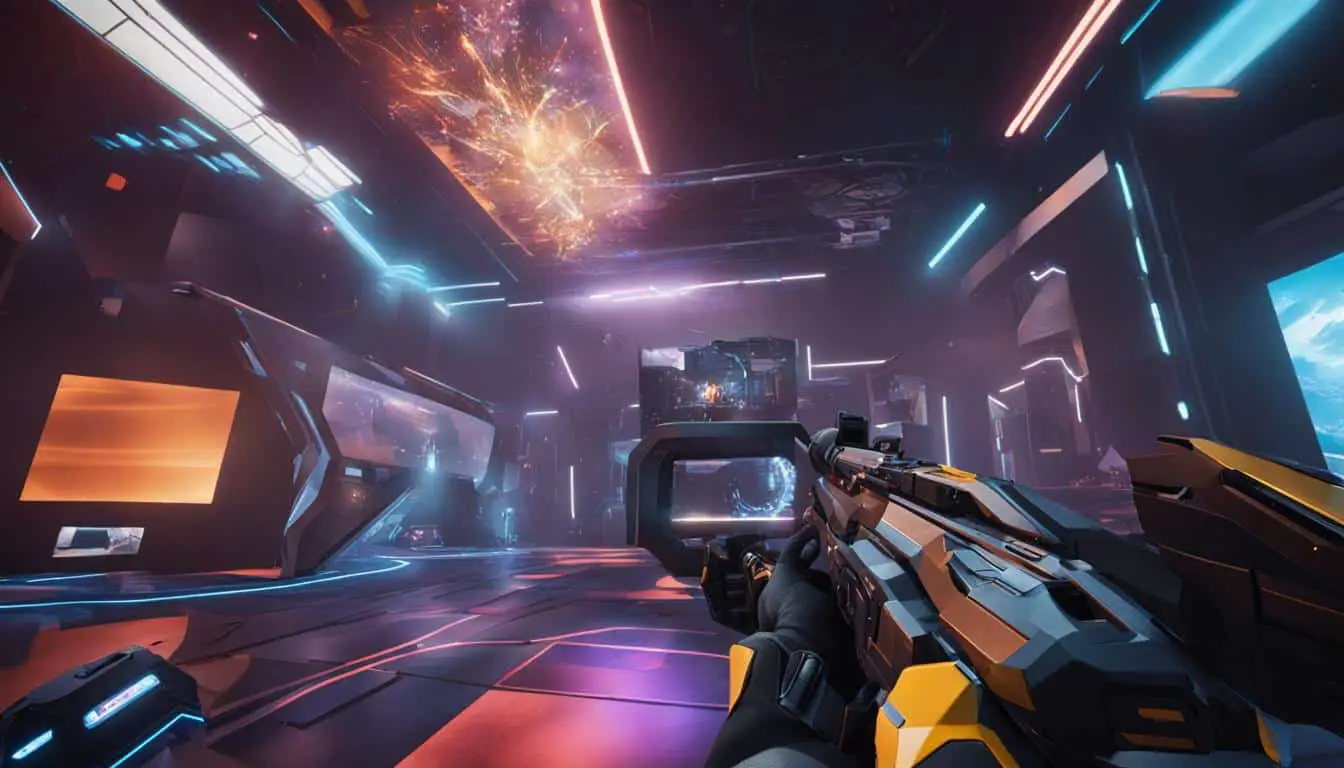
In the world of video games, AI-driven user experience design is revolutionizing gameplay and enhancing user engagement. Artificial intelligence (AI) has become a vital component in creating immersive experiences for players. AI techniques such as natural language processing (NLP) are used to tailor experiences for individual players, adapt gameplay based on player behavior, and create dynamic storylines with evolving characters. AI also plays a crucial role in enhancing graphics, analyzing player behavior, and adjusting difficulty levels. These advancements in AI technology are shaping the future of gaming and bringing unprecedented realism and immersion to users.
Key Takeaways:
- AI technology is transforming the user experience in video games, enhancing realism and immersion.
- Natural language processing (NLP) is used to tailor experiences for individual players.
- AI techniques adapt gameplay based on player behavior, creating dynamic storylines and evolving characters.
- AI enhances graphics, analyzes player behavior, and adjusts difficulty levels for an optimized gaming experience.
- The future of video game design lies in the continued integration of AI technology, enabling even more innovative and immersive gaming experiences.
AI Techniques for Game User Experience
The use of artificial intelligence (AI) techniques is transforming the user experience in video games, enhancing gamer engagement and immersion. AI-driven user interfaces have revolutionized game design by delivering personalized experiences tailored to individual players’ preferences and skill levels. Machine learning algorithms analyze player behavior, adapting gameplay and difficulty levels to ensure a challenging yet enjoyable experience for all gamers.
One of the key AI techniques employed in game user experience is machine learning. This technology allows game developers to create adaptive gameplay that responds to the player’s actions and decisions. By continuously analyzing and learning from player behavior, machine learning algorithms can dynamically adjust the game’s challenges, pacing, and rewards. This ensures that the game remains engaging and enjoyable, offering a personalized experience for each player.
Another AI technique that significantly enhances game user experience is the use of natural language processing (NLP). NLP enables games to understand and respond to player input in a more intuitive and natural way. Players can interact with the game using voice commands or text-based inputs, allowing for more immersive and immersive gameplay. NLP also enables games to generate dynamic dialogues and narratives, creating a more realistic and engaging storyline.
AI Techniques for Game User Experience: Summary
- AI techniques are revolutionizing game user experience by delivering personalized gameplay and adaptive challenges.
- Machine learning enables games to analyze player behavior and dynamically adjust gameplay, ensuring an engaging experience for all gamers.
- Natural language processing (NLP) enhances user interaction and enables more immersive gameplay through voice commands and dynamic dialogues.

| AI Techniques for Game User Experience | Benefits |
|---|---|
| Machine Learning | – Personalized gameplay – Adaptive challenges – Continuous engagement |
| Natural Language Processing (NLP) | – Intuitive interaction – Dynamic dialogues – Immersive storytelling |
The Future of AI in Video Game Design
In the ever-evolving world of video games, the integration of AI technology is shaping the future of game design. AI-driven user interfaces are revolutionizing the way players engage with games, improving user engagement and creating a more user-friendly gaming experience.
One of the key aspects of AI in video game design is the development of AI-driven user interfaces. These interfaces adapt to individual players’ preferences and provide personalized recommendations, enhancing the gaming experience and making it more immersive and enjoyable. By leveraging AI, game designers can create dynamic and responsive interfaces that cater to the unique needs of each player.
Furthermore, the advancement of AI in video game design will lead to improved user interfaces and more intuitive controls. This will enable players to have more seamless interactions with the game world, enhancing their immersion and overall satisfaction. As AI technology continues to progress, we can expect even more realistic graphics, lifelike characters, and dynamic gameplay experiences, further blurring the line between virtual and reality.
With AI at the forefront of video game design, the potential for innovation and immersive gaming experiences seems limitless. The future holds exciting possibilities as AI-driven user interfaces continue to evolve, ultimately creating a user-friendly gaming experience that captures the imagination of players worldwide.
FAQ
How is AI technology enhancing the user experience in video games?
AI technology is revolutionizing gameplay by tailoring experiences for individual players, adapting gameplay based on player behavior, and creating dynamic storylines with evolving characters. AI also enhances graphics, analyzes player behavior, and adjusts difficulty levels.
How does AI-driven user interface enhance the gamer experience?
AI-driven user interfaces deliver personalized experiences by adapting gameplay and difficulty levels based on individual preferences and skill levels. Machine learning algorithms analyze player behavior and provide adaptive gameplay, ensuring a challenging yet enjoyable experience for all players.
What role will AI play in the future of video game design?
AI-driven user interfaces will play a crucial role in enhancing user engagement and creating a user-friendly gaming experience. These interfaces will adapt to players’ preferences and provide personalized recommendations, making the gaming experience more immersive and enjoyable. AI will also enable improved user interfaces and intuitive controls, allowing for more seamless interactions between players and games.
Source Links
- https://pollthepeople.app/a-comprehensive-exploration-of-ai-driven-user-experience-design-in-games/
- https://mindy-support.com/news-post/using-ai-to-enhance-the-gaming-experience/
- https://medium.com/@vakingbizz12/how-ai-is-changing-video-games-e83300d7b2c2








